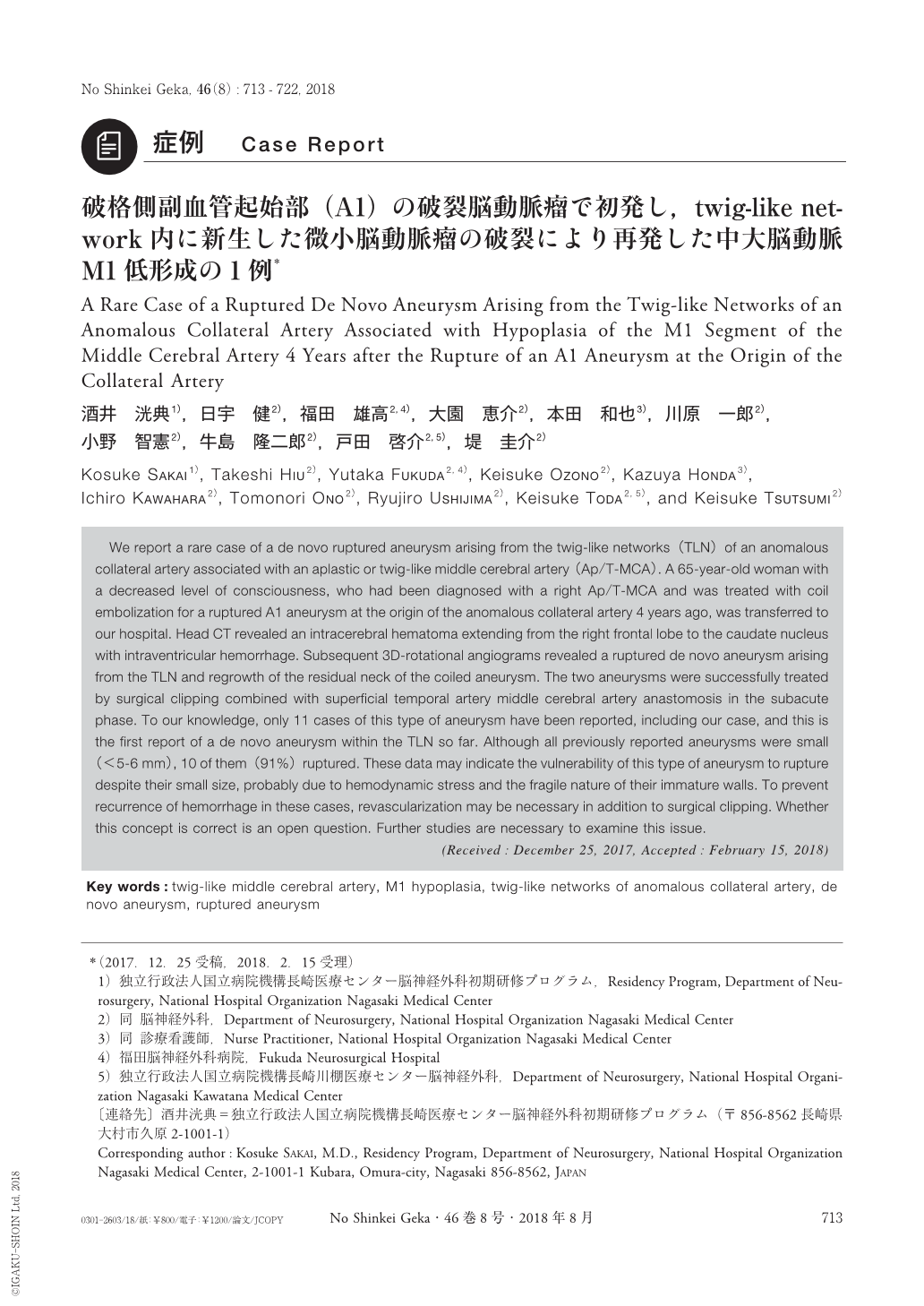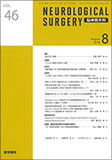Japanese
English
- 有料閲覧
- Abstract 文献概要
- 1ページ目 Look Inside
- 参考文献 Reference
Ⅰ.はじめに
Twig-like networks(TLN)を伴う中大脳動脈(middle cerebral artery:MCA)M1形成不全(aplastic or twig-like MCA10):Ap/T-MCA)は頭蓋内出血での発症が多く,出血源の1つとして脳動脈瘤の破裂がある1,5,10).今回われわれは,破格側副血管起始部(A1)の破裂脳動脈瘤で初発した4年後,TLN内の新生微小脳動脈瘤破裂で再発した稀な症例を経験したため,臨床上の留意点について考察する.
We report a rare case of a de novo ruptured aneurysm arising from the twig-like networks(TLN)of an anomalous collateral artery associated with an aplastic or twig-like middle cerebral artery(Ap/T-MCA). A 65-year-old woman with a decreased level of consciousness, who had been diagnosed with a right Ap/T-MCA and was treated with coil embolization for a ruptured A1 aneurysm at the origin of the anomalous collateral artery 4 years ago, was transferred to our hospital. Head CT revealed an intracerebral hematoma extending from the right frontal lobe to the caudate nucleus with intraventricular hemorrhage. Subsequent 3D-rotational angiograms revealed a ruptured de novo aneurysm arising from the TLN and regrowth of the residual neck of the coiled aneurysm. The two aneurysms were successfully treated by surgical clipping combined with superficial temporal artery middle cerebral artery anastomosis in the subacute phase. To our knowledge, only 11 cases of this type of aneurysm have been reported, including our case, and this is the first report of a de novo aneurysm within the TLN so far. Although all previously reported aneurysms were small(<5-6mm), 10 of them(91%)ruptured. These data may indicate the vulnerability of this type of aneurysm to rupture despite their small size, probably due to hemodynamic stress and the fragile nature of their immature walls. To prevent recurrence of hemorrhage in these cases, revascularization may be necessary in addition to surgical clipping. Whether this concept is correct is an open question. Further studies are necessary to examine this issue.

Copyright © 2018, Igaku-Shoin Ltd. All rights reserved.


